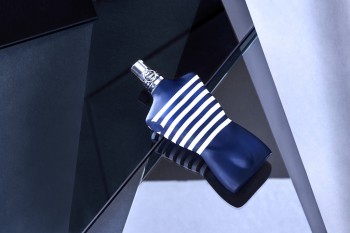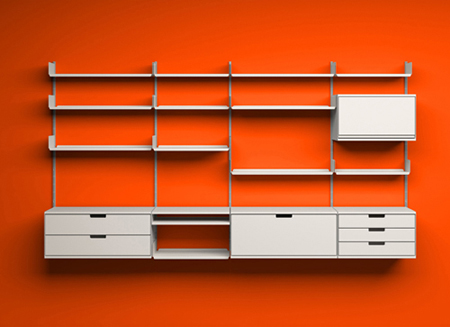Dieter Rams’ 10 Principles of Design
By Jo Phillips
From the 18 November until the 12 March next year, the Vitra Design Museum will present the “Dieter Rams. Modular World” exhibition. Dieter Rams is one of the most influential German designers of the past decades. He is an industrial designer and is best known for his products with the company Braun. This exhibition explores his works and features a section of the furnishings and electrical appliances designed by him. Furthermore, there is also historic visual material and a video interview in which Rams explains his design philosophy. The exhibition at the Vitra Design Museum is the first one to put a primary focus on his furniture designs to demonstrate how closely they are linked to his design philosophy.
The curator of the exhibition, Heng Zhi, told us in an exclusive interview, that “Dieter Rams is probably one of the most important designers alive in Germany or even worldwide. Renowned for his designs for Braun, his ideas behind furniture design are still to be fully discovered. The newly opened Vitra Schaudepot is a place where the history of furniture design is made visible with highlights of our collection at Vitra Design Museum. So we thought this would be the perfect setting to stage Dieter Rams’ furniture design and demonstrate his pioneer ideas of modularity, simplicity and sustainability with selected furniture groups”.
Back in the 1950s and 1960s, his designs were absolutely ground-breaking, as the typical interior post-war household consisted of heavy wall-units and bulky sofas. Zhi said that Rams was “among the first to leave technical parts and details of furniture visible, instead of hiding them away behind cushions and wooden surfaces. He also broke with the tradition that had furniture specifically designed for the bedroom, living room etc. and designed furniture pieces that could be adopted for different living and working situations”.
When curating the collection, an important aspect to Zhi was that “although most of Rams’ objects on show were designed decades ago, to a certain extent they are more up-to-date than ever. What is absolutely impressive about Rams‘ furniture is that it offers real, functioning solutions for sustainable living, and the answer lies in the perfection of design, NOT recycling”.
She also said that the exhibition gave her “the chance to engage with Dieter Rams’ philosophy on another level. Dieter Rams’ ten principles of good design are so simple that they are sometimes misunderstood or reduced to their rhetoric surface”.
Ram’s “Ten principles for good design”, which he began to formulate in the 1970s, are a useful source for gaining a better understanding of his multifaceted design activities. He was motivated to create these principles through the fundamental criticism of consumerism and therefore he wanted to present new goals for the practise of design. This is how he defines good design:
1) Good design is innovative
The possibilities for innovation are not, by any means, exhausted. Technological development is always offering new opportunities for innovative design. But innovative design always develops in tandem with innovative technology, and can never be an end in itself.
2) Good design makes a product useful
A product is bought to be used. It has to satisfy certain criteria, not only functional, but also psychological and aesthetic. Good design emphasises the usefulness of a product whilst disregarding anything that could possibly detract from it.
3) Good design is aesthetic
The aesthetic quality of a product is integral to its usefulness because products we use every day affect our person and our well-being. But only well-executed objects can be beautiful.
4) Good design makes a product understandable
It clarifies the product’s structure. Better still, it can make the product clearly express its function by making use of the user’s intuition. At best, it is self-explanatory.
5) Good design is unobtrusive
Products fulfilling a purpose are like tools. They are neither decorative objects nor works of art. Their design should therefore be both neutral and restrained, to leave room for the user’s self-expression.
6) Good design is honest
It does not make a product more innovative, powerful or valuable than it really is. It does not attempt to manipulate the consumer with promises that cannot be kept.
7) Good design is long-lasting
It avoids being fashionable and therefore never appears antiquated. Unlike fashionable design, it lasts many years – even in today’s throwaway society.
8) Good design is thorough down to the last detail
Nothing must be arbitrary or left to chance. Care and accuracy in the design process show respect towards the user.
9) Good design is environmentally-friendly
Design makes an important contribution to the preservation of the environment. It conserves resources and minimises physical and visual pollution throughout the lifecycle of the product.
10) Good design is as little design as possible
Less, but better- because it concentrates on the essential aspects, and the products are not burdened with non-essentials. Back to purity, back to simplicity.
According to the curator Heng Zhi, the last principle “is sometimes understood to be sterile minimalism. However, it is modesty and unspectacular design that Rams’ furniture strives for – furniture that disappears once filled with objects and life, or in use by its customers. I think this is another aspect why some of Rams’ furniture has stood over time – because of its “visual sustainability”, as Rams himself would say”.









